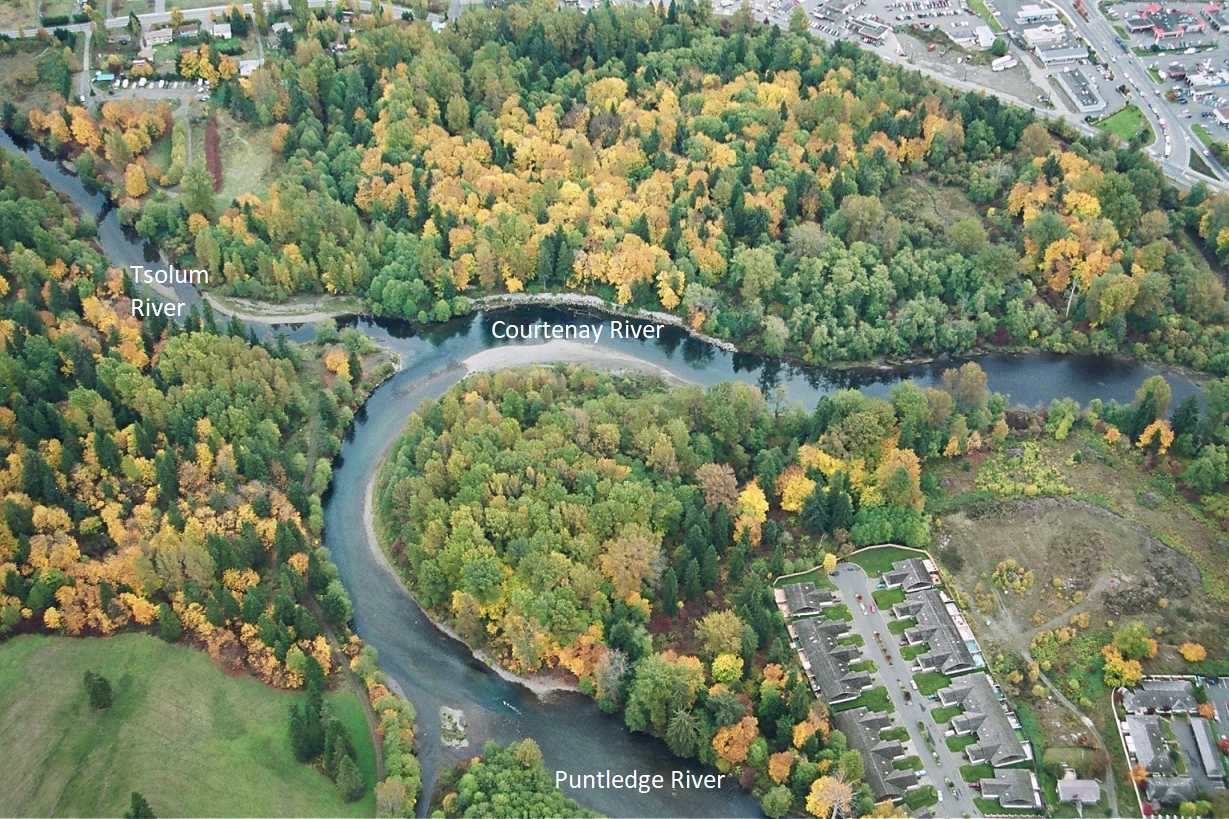Courtenay River
The Courtenay River is significant for its historic, scientific, and social value, particularly for its historic importance to Courtenay’s early inhabitants and businesses, its biological importance, its unique physical characteristics, and its role in Courtenay’s recreational development.
The heritage value of the Courtenay River lies in its cultural and historical importance to both the Pentlach and K’omoks First Nation’s people who occupied and controlled the territory in and around Courtenay for thousands of years. The remnants of numerous fish traps located throughout the mouth of the Courtenay River and Estuary, one of the largest concentration of inter-tidal fishing structures in North America, attest to the abundance of marine life made available by the Courtenay River and Estuary. The remnants of these aboriginal fish traps are valued as a unique educational opportunity to study sustainable First Nations fishing technologies and culture for all citizens.
The Courtenay River is valued for its important role in Courtenay’s early pioneering development. Thousands of years of natural flooding of the River resulted in cleared and rich alluvial soil which made conditions perfect for agricultural settlement and prompted Courtenay’s first settlers to preempt in the area in 1862. The width and depth of the river facilitated early transportation and business ventures, which is reflected in the pilings and cribbing that still line the River and estuary.
The Courtenay River’s scientific value lies in its biological importance to a variety of species of wildlife, including salmon and migratory birds that winter in the area. It is significant that hundreds of protected Trumpeter Swans winter at the Courtenay River estuary, resulting in the largest concentration of the species anywhere in the world.
The River’s scientific value is also expressed in its physical uniqueness as the River is the shortest navigable river in the world.
The Courtenay River’s social value lies in its central role in the development of Courtenay’s recreational identity which is exemplified by the River’s prominent and accessible location through the heart of the City.
Human Resources
Related Posts
Eelgrass Update
In the fall our restoration team surveyed the three eelgrass beds which were planted with the help of our volunteers back in June. The beds are looking healthy!
Kus-kus-sum: End of Season Wrap-up
Now that we have put the Kus-kus-sum site to bed for the winter, we wanted to give you all a little update on how things progressed this season – lots happened!
Kate McKeown
Meet our new Forage Fish Technician!
Greenshores at Dyke Road Park – Reimagining a Park
On September 20 and 21, over 20 people were on site to help with planting at the Comox Valley Regional District’s (CVRD) Dyke Road Park redevelopment project.
Gartley Beach Green Shores for Homes Project
Project Watershed is teaming up with the CVRD and the Stewardship Centre for BC to do some shoreline restoration at Gartley Beach in Royston.
Fall and Winter Forage Fish Sampling
We’re gearing up for the fall/winter season of forage fish sampling!




